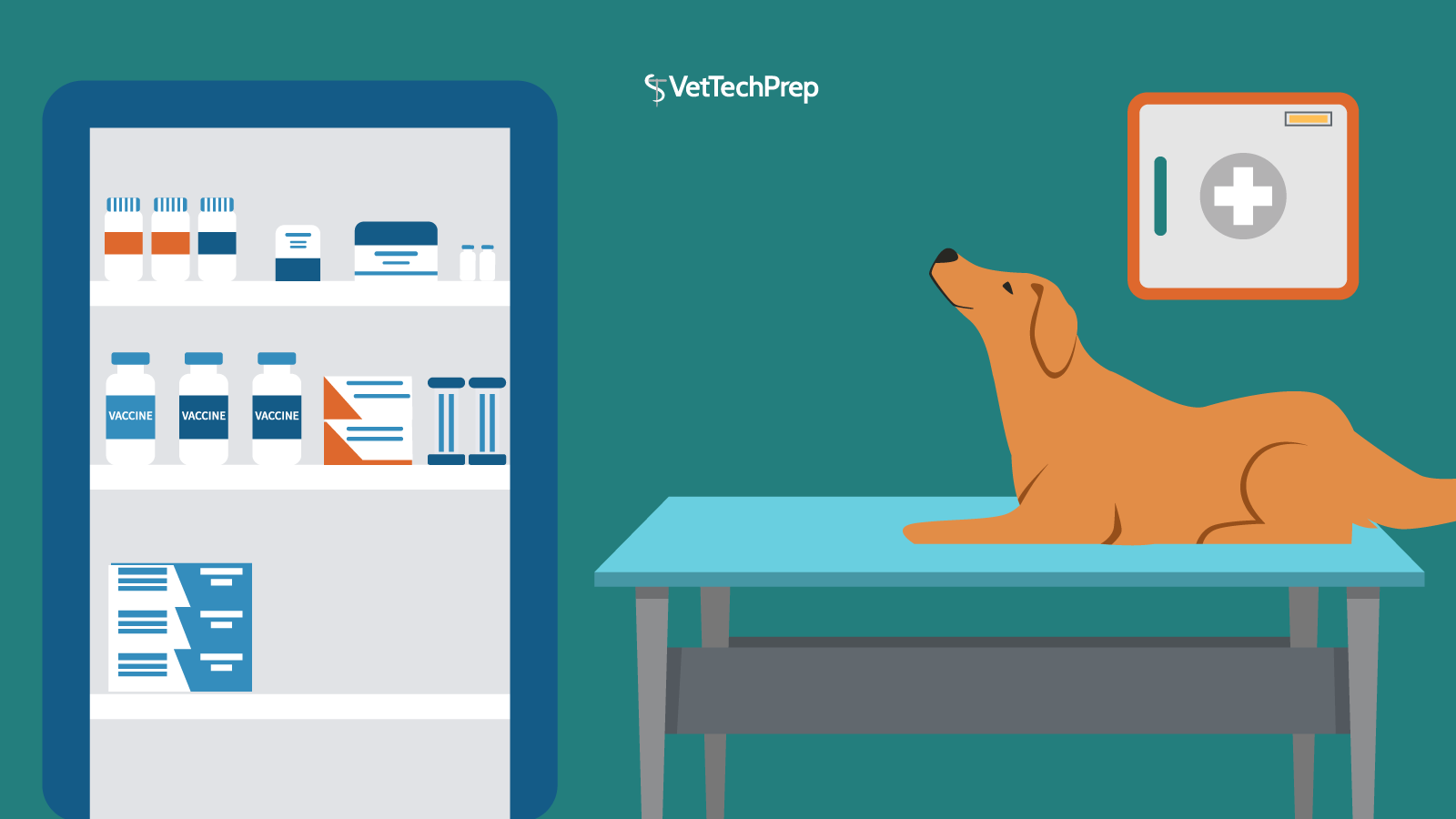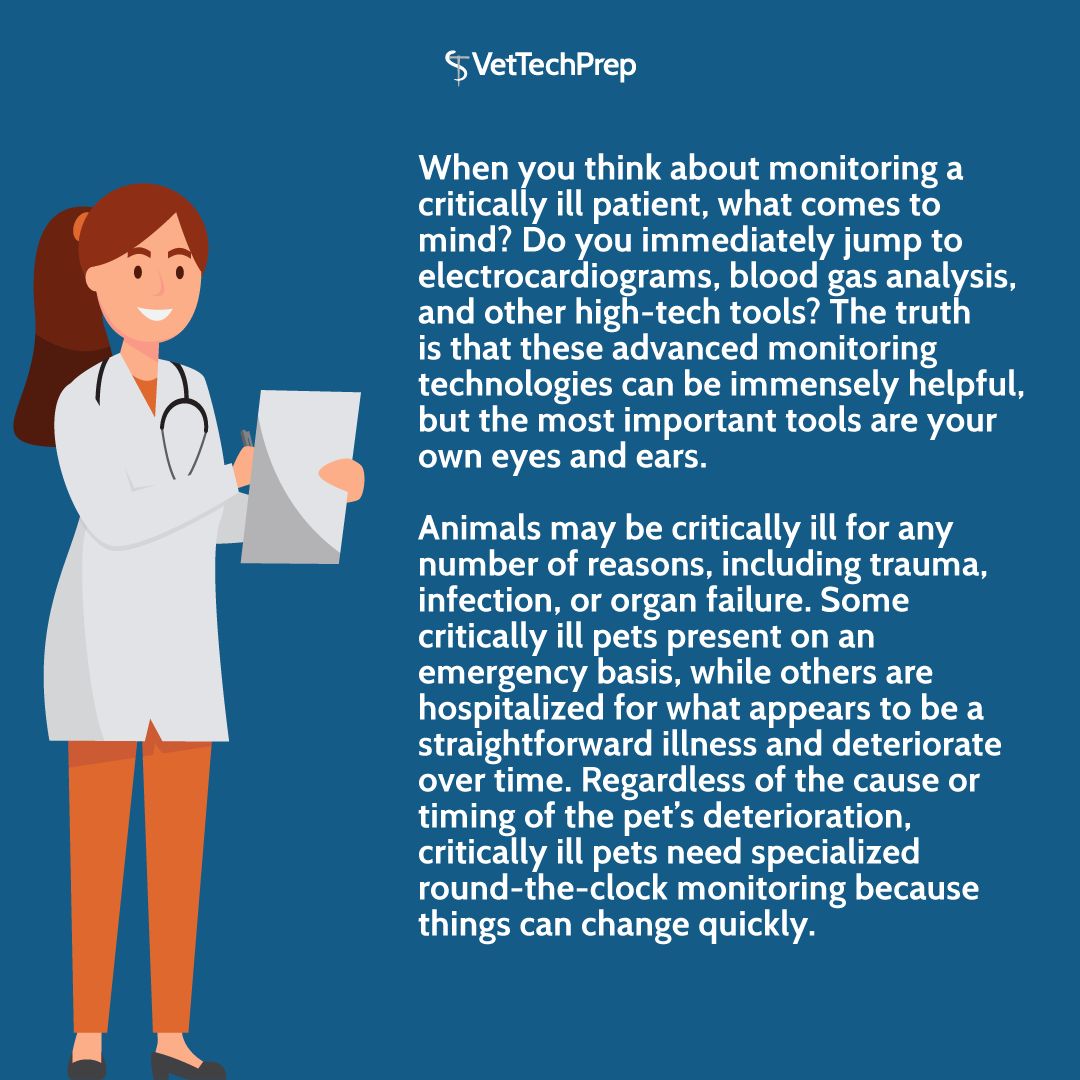
When you think about monitoring a critically ill patient, what comes to mind? Do you immediately jump to electrocardiograms, blood gas analysis, and other high-tech tools? The truth is that these advanced monitoring technologies can be immensely helpful, but the most important tools are your own eyes and ears.
Animals may be critically ill for any number of reasons, including trauma, infection, or organ failure. Some critically ill pets present on an emergency basis, while others are hospitalized for what appears to be a straightforward illness and deteriorate over time. Regardless of the cause or timing of the pet’s deterioration, critically ill pets need specialized round-the-clock monitoring because things can change quickly.
Hands-On Monitoring
Critically ill patients require regular exams by a vet tech or veterinarian, anywhere from hourly to every twelve hours. The frequency of these exams may change from day to day, or even hour to hour, but should be determined by the veterinarian.

Parameters to be checked (and recorded!) during hands-on monitoring include:
- Temperature
- Heart rate
- Respiratory rate
- Respiratory effort
- Mucous membrane color
- Capillary refill time
- Pulse quality
- Pain assessment score
- Mentation
Each parameter should be recorded in the patient’s medical record. At each exam, it’s important to not only examine the current parameters for abnormalities, but also to look for trends that may be developing. While a pet’s temperature may technically fall within the normal range, for example, a steadily climbing or falling temperature over several readings may provide an early indication of a problem.

In patients with a suspected neurologic condition, a neurologic exam may also be a component of routine monitoring. In these pets, pay special attention to menace response, pupillary light reflexes, presence/direction of nystagmus, and withdrawal reflexes. Additional testing may also be recommended by the veterinarian, depending on the pet’s underlying condition.
Monitoring With Equipment
While monitoring equipment is valuable, it’s important to remember that it’s an adjunct to hands-on monitoring, not a replacement for hands-on monitoring! Any abnormal readings should prompt an immediate hands-on exam, in order to distinguish equipment malfunction from a true worsening of the pet’s condition.
Monitors frequently used in the care of critically ill pets include:
- Continuous ECG monitoring
- Pulse oximetry
- End-tidal CO2 monitoring
- Arterial blood pressure monitoring: direct (arterial catheter) or indirect (Doppler or cuff)
- Blood test monitoring: parameters commonly monitored include PCV, total protein, blood glucose, electrolytes, venous/arterial blood gas, clotting tests
Fluid Ins and Outs
Many critically ill patients are receiving intravenous fluids and/or have a disrupted fluid balance. For this reason, it’s often important to monitor fluid “ins and outs.”
Ins include oral water intake, intravenous fluids, and fluid contained in the diet (enteral or parenteral nutrition). This can often be directly measured.
Outs include urine, feces, vomit, fluid seepage from wounds, and fluid movement into body cavities (also known as third-spacing). While it is challenging to measure outs with 100% accuracy, weighing potty pads and other measures can help you arrive at the most accurate estimate possible.
In addition to monitoring ins and outs, bodyweight monitoring can also serve as an additional way to assess fluid balance.
Conclusion
When monitoring a critically ill patient, it’s important not to become so caught up in the high-tech monitoring equipment that you neglect to examine the pet with your own eyes and ears. Take the time to perform intentional, deliberate hands-on exams, because these exams can often provide you with information that cannot be gained through monitoring equipment.
Additionally, take the time to communicate your findings clearly in the medical records, using your practice’s standard techniques and terminology. Accurate recordkeeping will facilitate day-to-day comparisons, even as the patient’s care team changes between shifts.




